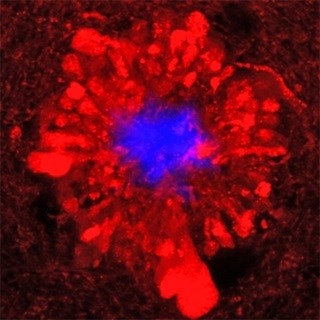
Top stories


Marketing & MediaCammy Msimango on finding her footing in South Africa’s fast-moving digital newsroom
Esther Tomorrow, MDNTV 21 hours




More news




In the accompanying image, amyloid plaques in blue are surrounded by damaged neuronal branches.
Neuroscientists Jaime Grutzendler and Peng Yuan used a new technology called chemogenetics to alternately inhibit or excite neuronal signaling in mice with Alzheimer's. The goal was to test the theory that hyperactivity in neurons might contribute to the onset of Alzheimer's. Such an increase in neuronal activity might trigger the production of excess amounts of amyloid beta peptides, which in turn may be toxic to brain cells and cause the symptoms of dementia, Grutzendler said.
On the other hand, suppressing this hyperactivity could be a novel way of halting the progression of the disease, he noted.
The study appears 12 January 2016 in the Journal of Neuroscience.
Source: Yale University